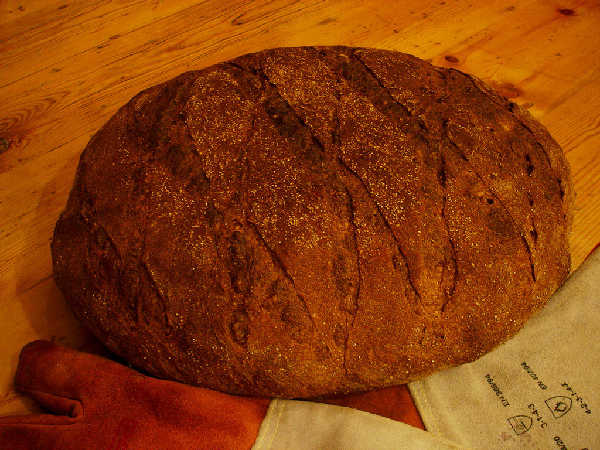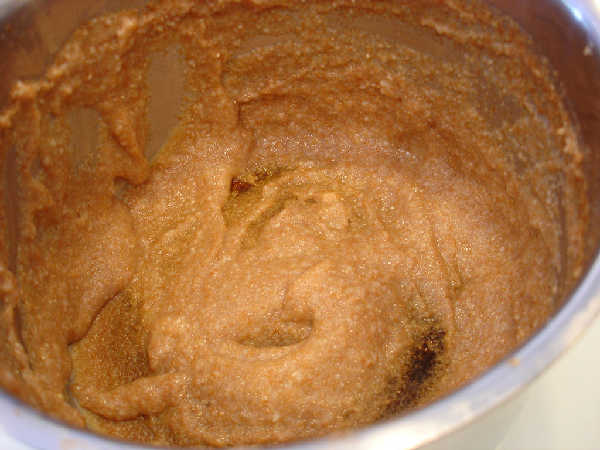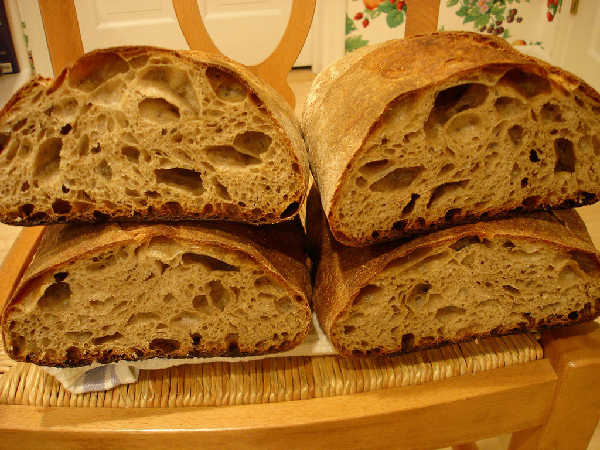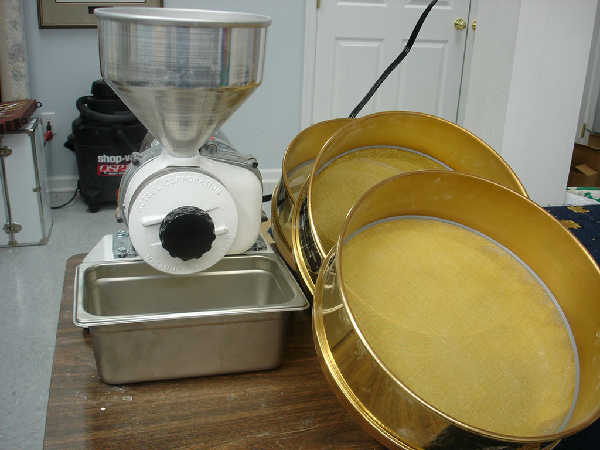As I conducted my home ash content tests during the latest home milling and sifting session, a sourdough starter was accidentally started. The home ash content test involves mixing 5 grams of flour with 100 grams of distilled water, stirring it periodically, and measuring the conductivity of the water until it stabilizes, about 24 hours later. All of that time was spent at about 69F, the temperature of my kitchen in the winter. I noticed a familiar smell, something like yogurt, that was reminiscent of the early stages of some of the starter starting experiments I have conducted in the past. The pH was measured and, sure enough it was around 3.4 for all the jars I was testing, even though the jars had various flours including Heartland Mill AP, Golden Buffalo, and whole wheat, as well as various flours from my milling and sifting experiment.
Wednesday, January 30, 2008
Sunday, January 20, 2008
Sunday, January 13, 2008
Home Milling and Sifting - Two More Tries
Below is a photo of my third attempt at home milling and sifting, which resulted in a flour very similar to my favorite "high extraction flour", Heartland Mills Golden Buffalo flour. The processes used on my second and third tries are explained further below. Additional photos of the process have been posted.


Cream of Wheat Middlings Breakfast

My home sifting project resulted in "middlings", a term I may be using incorrectly. What I mean by middlings is the stuff I sifted out that is finer than bran but was coarser and darker than I wanted for the flour being produced.
Saturday, January 12, 2008
Home Ash Content Measurement
Recently, I've been attempting to grind and sift my own flour. The grinding is straightforward with a Retsel Mil-Rite, an excellent home stone buhr mill or my new Meadows 8-inch stone mill. However, the mysteries of sifting the flour have been less straightforward. A subsequent blog entry will deal with my progress on grinding and sifting my own flour. The sifting project motivates the need for measuring the ash content of my flour.
Sunday, January 6, 2008
Sourdough Rise Time Table
I've had a number of discussions with TFL participants recently about sourdough rise times versus temperature and inoculation. Temperature has a big effect on sourdough rise times, and sometimes a starter appears unhealthy, when it is really just rising more slowly because of low temperatures in the kitchen during winter. Also, recipes that used to work seem to fail during the winter, but the colder temperatures may be the cause. To adjust for cold winter kitchen temperatures, either the temperature must be managed actively (oven with pilot light or electric light, coolers with a bowl of warm water in them, and so on), or the percentage of fermented flour must be adjusted in the recipe, or much more time must be allowed for the bulk fermentation and proofing.
Subscribe to:
Comments (Atom)

